The Gone Sounds of Jazz with Sid Gribetz
An archive of jazz radio programs focused on intensive in-depth looks at great themes from jazz history. Winner of the Jazz Journalist Association Award for Career Excellence, Sid has been broadcasting for over 40 years on WKCR-FM, NYC. He was also voted ’Best Jazz DJ’ by the Village Voice in its 2008 Best Of NY Issue.
Episodes
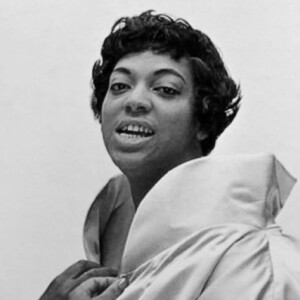
Friday Sep 27, 2024
Lorez Alexandria
Friday Sep 27, 2024
Friday Sep 27, 2024
Vocalist Lorez Alexandria was a great interpreter of jazz and American popular song. She sang with deeply felt presentation of the lyrics and a style of improvisational freedom and swing. While originally from the church and informed by that soul, she was not a “shouter” or gospel singer. Some records, like her hit version of “Baltimore Oriole”, employed exotic touches, and others had scat interludes. Like the best instrumental soloists, Lorez communicated with the listener and told her song’s story. Not overly famous during her lifetime, she is certainly not well-remembered today. But she deserves to be.Lorez Alexandria (a nickname for Delores Alexandria Turner) was born August 14, 1929 in Chicago, and raised in that city. She sang with family members in church groups and traveling a capella gospel choirs. It is said that her choir once performed for President Truman.As an adult she turned to a professional career in popular song and jazz, and in the 1950's Alexandria was a leading performer in Chicago nightclubs, often in the groups of pianist King Fleming. She also performed with Ramsey Lewis, John Young, and other leading Windy City jazz musicians. In the late 1950's and early 1960's she made seven albums for local independent labels King and Argo which stand up today as classics that should be known (and will be played in depth on our program).In 1962 Alexandria moved to Los Angeles and remained in that city the rest of her life. In 1964 she made two albums for Impulse with Wynton Kelly but mostly remained beneath the major radar.Over the years she recorded with small California labels, not so widely distributed, although one was nominated for a Grammy award. In the late 1980's she began a relationship with the more nationally known Muse Records which helped invigorate her reputation..However, in 1993 Alexandria suffered a stroke and gradually retired from the music business. She died of kidney disease in 2001.
originally broadcast January 12, 2020
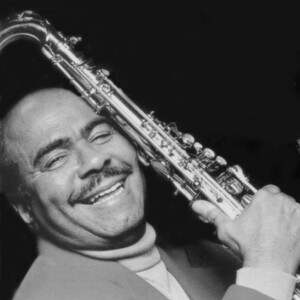
Thursday Sep 26, 2024
Benny Golson
Thursday Sep 26, 2024
Thursday Sep 26, 2024
Benny Golson is one of the great eminences of jazz, best known as a composer of lyrical compositions that have become enduring staples of the modern jazz repertory. A key performer in some of the most important jazz groups of the late 1950's and early 1960's, Golson added an element of elegance and refinement to the hard bop sound. He imposed a steady sophistication and class to the ensemble presentation.
Stablemates, Killer Joe, Whisper Not, I Remember Clifford, Along Came Betty, Blues March, Five Spot After Dark, and Are You Real are among the great songs that you’ll recognize during this broadcast and that typify his style.
Born January 25, 1929, Golson was raised in Philadelphia and came of age with high school compatriots such as John Coltrane and Jimmy Heath. Initially inspired by Arnett Cobb, Golson began his professional career in the early 1950's in rhythm and blues bands, sharing these chores with many jazz friends such as Tadd Dameron, who influenced Benny’s arranging style. He also traveled with Dizzy Gillespie’s big band.
Golson’s major breakthrough came upon joining Art Blakey’s Jazz Messengers in 1958. As arranger and musical director he helped take Blakey’s combo design to the “next level”. Later, together with Art Farmer and Curtis Fuller he founded “The Jazztet”, which was an innovative and popular group that expanded the possibilities of the hard bop ensemble. During this period he also participated in many significant recordings as an instrumentalist and as an arranger in multi-faceted settings.
By the late 1960's, Golson left the jazz scene and settled in California where he became a distinctive arranger and orchestrator of major television and movie scores.
Returning to jazz during the neo-classic revival period of the 1980's, Golson continued to perform vigorously until his final years.
Golson died on September 21, 2024 at the age of 95.
Originally broadcast on June 5, 2016

Sunday Sep 15, 2024
Coleman Hawkins 1
Sunday Sep 15, 2024
Sunday Sep 15, 2024
WKCR presents an annual marathon broadcast celebrating the Coleman Hawkins birthday on November 21.
From the 2023 affair, here's a 185 minute long segment. It begins with a brief sample of early 1960's recordings with Duke Ellington, and other mainstream sides. Then the final 149 minutes contains an intensive survey of his career in the period from 1939 through 1944, after his return from Europe. From Body And Soul through the Apollo early bebop date.
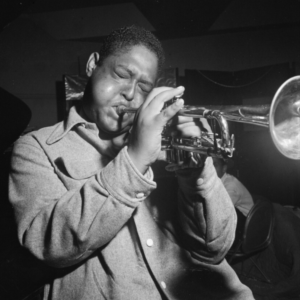
Sunday Sep 15, 2024
Fats Navarro
Sunday Sep 15, 2024
Sunday Sep 15, 2024
In his brief life, Fats Navarro was a fleeting spectacle of brilliance as a leading trumpeter in the history and development of jazz during the bebop years.
Nicknamed “Fats” or “Fat Girl” (befitting all in one his avoirdupois, his high pitched voice, and most important his fat musical tone on the trumpet), Theodore Navarro was born on September 23, 1923 in Key West. He played music seriously since childhood, and left Florida after high school to embark on a career as a professional jazz musician in big bands, first gaining notice as a teenager in Andy Kirk’s Clouds Of Joy. Upon the enthusiastic recommendation of Dizzy Gillespie, Navarro was hired to replace Diz in the notorious Billy Eckstine bebop big band in 1945.
In the late 1940's Navarro became a leading exponent of the bebop revolution, adding idioms and dialect to the musical language created by Bird and Diz, and, as Dan Morgenstern has written, possessing a beautiful tone, brilliance of execution, solid musicianship, and great powers of invention.
Navarro’s brief life ended on July 7, 1950, at the age of 26, succumbing both to a lingering illness with tuberculosis and the ravages of his heroin addiction.
Our program will explore his entire musical career, including his seminal recordings with Tadd Dameron, Bud Powell, Kenny Clarke, Coleman Hawkins and other greats.
broadcast July 2022
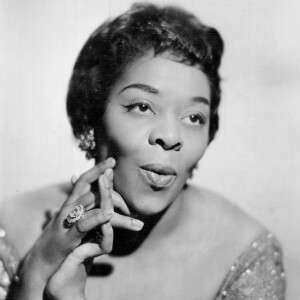
Sunday Sep 15, 2024
Dinah Washington
Sunday Sep 15, 2024
Sunday Sep 15, 2024
Dinah Washington called herself "The Queen Of The Blues", and she was that, and then some, a larger than life character and a dynamic singer of great jazz, pop, rhythm and blues, and the American Popular Songbook.Born in Tuscaloosa, Alabama and reared in Chicago (as Ruth Jones), influenced by gospel music she began singing professionally as a youth. Lionel Hampton "discovered" her, and she featured in his band for a number of years under the stage name Dinah Washington, before striking out on her own. Dinah brought forth popular "crossover" hit records for Mercury, jazz classics with all the greats, and best selling numbers like "What A Difference A Day Made", whether with jazz combos, big bands, R&B groups, or string orchestras.Married seven times, to among others saxophonist Eddie Chamblee and gridiron great Night Train Lane, she lived a nervy, extravagant life style. On the one hand always informed by her gospel roots, Dinah was transcendent, and she translated her varied popular repertoire into the secular and sexual passion of the blues. Her delivery combined intense feeling with crystal-clear diction so that, as the music poured out, she still seemed in total control, one of the all time best at conveying the heartfelt meaning of song lyrics.A heavy drinker, and overusing prescription diet pills, Dinah died from an accidental overdose on December 14, 1963 at the age of 39. Leaving us even at that young age, she left behind a prolific legacy. We’ll present a representative retrospective look at her career on our program, timed to coincide with celebration of her centennial, as she was born August 29, 1924.
originally broadcast September 1, 2024

Friday Sep 06, 2024
Thelonious Monk 1
Friday Sep 06, 2024
Friday Sep 06, 2024
WKCR presents annual marathon broadcasts to celebrate the October 10 birthday anniversary of Thelonious Monk.
From the 2023 edition, here's 205 minutes of a segment I presented. Begins with a potpourri of Monk's music, first some live performances, next piano music, featuring selections from, among other recordings, the French Vogue session, the Duke Ellington album, and the "The Unique Thelonious Monk". The final 123 minutes includes a survey of a less-famous aspect of Monk's career, his recordings for the Prestige label.

Friday Sep 06, 2024
Tadd Dameron
Friday Sep 06, 2024
Friday Sep 06, 2024
Tadd Dameron was born in Cleveland in 1917 and came of age towards the end of the Swing Era. As the bebop revolution unfolded, Dameron was a key figure as a pianist in various bands, arranger for Dizzy Gillespie and others, and composer of classics such as “Hot House", "If You Could See Me Now", "Our Delight", "Good Bait" and "Lady Bird".
He’s been called the romanticist of the bebop era. Certainly his sophisticated musicianship and lyrical touch elevated the harmonic advances of bebop, and his emotive style informed the music of Fats Navarro, Wardell Gray, Clifford Brown and so many others.
Additionally, Dameron had the opportunity to present his music in his own medium-sized orchestras. His recording legacy also includes leading sessions with greats like John Coltrane, inter alia.
Unfortunately his career was interrupted by narcotics issues and related prison terms, and later cut short by various health problems. Dameron died of cancer in 1965.
originally broadcast in 2010
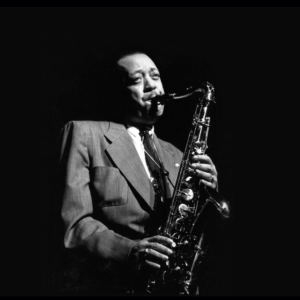
Friday Aug 30, 2024
Lester Young 3
Friday Aug 30, 2024
Friday Aug 30, 2024
The "Bird-Prez Birthday Broadcast", a 72 hour (and some years longer) marathon celebrating Lester Young and Charlie Parker around their birthday anniversaries, August 27 and August 29, is a long standing tradition at WKCR, and it is among our listeners' favorites.
For the 2024 edition, I programmed a set reviewing Lester Young's studio recordings for Norman Granz, on "Verve".

Friday Aug 30, 2024
Eddie Jefferson
Friday Aug 30, 2024
Friday Aug 30, 2024
Eddie Jefferson was the progenitor of the style known as “vocalese”, the writing of lyrics to the improvised solos on jazz instrumental recordings.Jefferson was born on August 3, 1918 in Pittsburgh. His father was in show business, and Pittsburgh back in the day was a jazz town of vitality. Eddie began professionally as a child in song and dance acts with local friends such as Erroll Garner.As a young man, Eddie plied his trade as a dancer on the traveling black entertainment circuit, working on the same bills opposite jazz greats such as Coleman Hawkins during the “Body And Soul” years. Along with his dance partner Irv Taylor, Jefferson would while away the time on the road listening to songs on a portable record player, and they would conceive lyrics to go along with the soloists on the records, whether of Prez and Herschel Evans and Buddy Tate with Count Basie, or Chu Berry with Cab Calloway, or popular bands. Jefferson was also influenced by the scat singing and surrealism of Leo Watson. The arrival of Charlie Parker and bebop gave another inspiration to Eddie.From this background emerged a new style of jazz singing. Just as the jazz soloist created a new melody in improvising, Jefferson canonized the recorded solos and invested them with fixed life as songs of their own. It is often said that the purpose of the solo is to tell a story. Jefferson’s lyrics interpreted these stories, and also told his own. His experience from the jazz life would be the chronicles he made of “Body and Soul”, “Now’s The Time” or “So What”. Or he would tell his own love stories (“Disappointed”), or spin yarns of fanciful tales turning Lester Young’s version of “It’s Only A Paper Moon” in to a take off of a trip to space on “Come Along With Me”, or reworking “A Night In Tunisia” as an exotic desert fantasy.The first public breakthrough remains the most famous - in 1949, on a visit to Sweden, James Moody recorded a version of the standard “I’m In The Mood For Love” with a stunning improvisation. The record took off in the states, and Eddie Jefferson wrote lyrics that would become “Moody’s Mood For Love” (There I Go, There I Go...). King Pleasure made the first recording of the song, and that immediately put the genre on the map. Annie Ross and others would soon follow. And Eddie Jefferson teamed up with Moody, becoming both the singer with his touring band, and road manager, throughout the 1950's. Meanwhile, groups such as Lambert Hendricks and Ross took up the cudgels, and vocalese became a sensation.But the popularity of jazz faded in the 1960's and Jefferson was forced to support himself outside of music. With the beginnings of a jazz revival in the 1970's Eddie was back. He teamed with the young saxophone player Richie Cole and toured the country, and Eddie was also a big part of the jazz loft scene in Soho and the Bowery in New York City at places like Bond Street and The Tin Palace. Unfortunately, this comeback ended when Eddie was senselessly murdered in 1979, while leaving his performance outside Baker’s Keyboard Lounge in Detroit.
originally broadcast in 2017
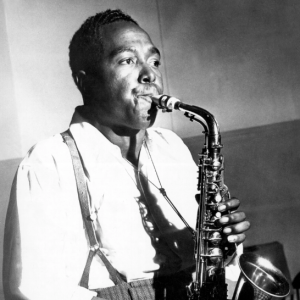
Friday Aug 30, 2024
Charlie Parker 2
Friday Aug 30, 2024
Friday Aug 30, 2024
The "Bird-Prez Birthday Broadcast", a 72 hour (and some years longer) marathon celebrating Lester Young and Charlie Parker around their birthday anniversaries, August 27 and August 29, is a long standing tradition at WKCR, and it is among our listeners' favorites.
From the 2023 edition, I programmed a set which included primarily a look at Bird's studio recordings of 1947, a magical period for bebop.

